IALCCE 2014 - Program
Special Sessions
SS1: Evaluation of cover concrete quality for ensuring durability of concrete structures
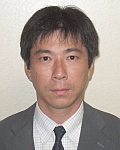 |
Kei-ichi Imamoto (Tokyo University of Science, Japan) |
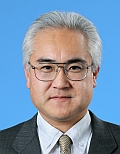 |
Toshiharu Kishi (The University of Tokyo, Japan) |
|---|
The durability performance of concrete structures depends on the mass transfer resistance of cover concrete, which is a primary factor contributing to deterioration caused by chloride ion or other penetrants. Therefore, the verification/inspection of cover concrete quality is very important for ensuring the durability performance of concrete structures. However, the post-construction quality verification system of in-place concrete structures was not implemented in the actual inspection stage. Recently, the research works on the evaluation of cover concrete quality using the non-destructive tests are actively done. In this special session, several technologies will be introduced to tackle with this problem.
SS2: Life-cycle assessment of performance in concrete bridge decks under severe conditions
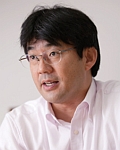 |
Ichiro Iwaki (Nihon University, Japan) |
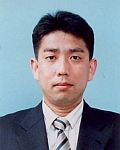 |
Satoshi Tsuchiya (COMS Engineering Corporation, Japan) |
|---|
In recent decades, lots of concrete road bridge decks have been severely damaged by fatigue due to heavy vehicle loadings, and various deterioration mechanisms such as frost damage, ASR and corrosion of reinforcement enhanced by deicing salt. To solve this problem, experimental methods using a wheel running machine for travelling wheel-type loads and sophisticated numerical models for the damage mechanism of concrete bridge decks under fatigue loads and several deteriorations are being developed. The aim of this special session is to introduce current experimental and theoretical works for evaluating life-cycle performance of concrete road bridge decks under severe conditions.
SS4: Performance assessment of concrete structures strengthened with externally bonded FRP composites under combined mechanical and environmental actions
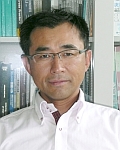 |
Yasuhiko Sato (Hokkaido University, Japan) |
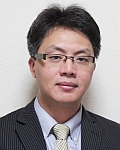 |
Jian-Guo Dai (The Hong Kong Polytechnic University, China) |
|---|
Concrete structures are load bearing and at the same time exposed to various environmental actions. The combined actions of both factors may usually shorten the service life of the structure. Nowadays, externally bonded FRP composites are widely used as a strengthening material of existing concrete structures all over the world. To facilitate a more economic but safe application of this strengthening technique, the long-term performance of the strengthened structures must be examined. This special session focuses on current achievements on experimental and analytical work evaluating the mechanical and/or durability performances of concrete structures strengthened with externally bonded FRPs under combined mechanical and environmental actions.
SS5: LCC and risk evaluation on geotechnical and geo-environmental problems
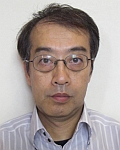 |
Ikumasa Yoshida (Tokyo City University, Japan) |
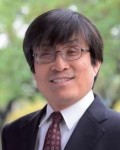 |
Shinichi Nishimura (Okayama University, Japan) |
|---|---|---|---|
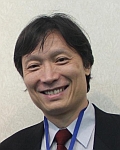 |
Chianan Liu (National Chi-Nan University, Taiwan) |
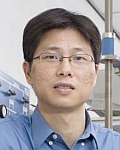 |
Yu Wang (City University of Hong Kong, Hong Kong) |
The idea of the life-cycle cost (LCC) is getting important also on the maintenance of geotechnical structures. Optimum maintenance plans should be determined based on the minimization of the LCC. The risk evaluation is an important part of LCC for the deterioration of structures, the natural hazards and geo-environmental problems related to the pollution of the ground and subsurface water. Update by observation or inspection is an essential part of LCC or risk evaluation of existing structures. The general expression of the risk and the evaluation methods on these problems are discussed in this special session.
SS6: Sustainable bridge technologies in structure, design and construction
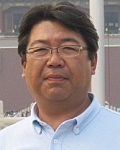 |
Kei-ichi Aoki (Nippon Expressway Research Institute, Japan) |
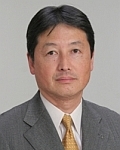 |
Akio Kasuga (Sumitomo Mitsui Construction, Japan) |
|---|
Recently, sustainability of bridge has been discussed regarding to materials and recycle based on reduction of CO2. However, sustainability has another aspect, for example, structure, design and construction, which lead the minimizing energy consumption in the whole life time of bridges. Minimizing energy due to long life time of bridges gives a sustainable solution to human. For sustainable bridges, long life time is one of the key things. The aim of this special session is to focus on long life time of bridges regarding to the structural point of view. Structural type, detail, design and special construction techniques for sustainable bridges will be discussed in this special session.
SS7: Structures in marine environments
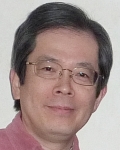 |
Hiroshi Yokota (Hokkaido University, Japan) |
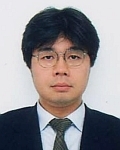 |
Mitsuyasu Iwanami (Tokyo Institute of Technology, Japan) |
|---|---|---|---|
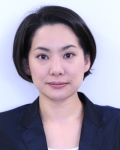 |
Ema Kato (Port and Airport Research Institute, Japan) |
This special session deals with life-cycle performance of civil infrastructure in marine environments. Steel, concrete, and their composites are main structural components of structures along or off the coast, in which corrosion, ASR, frost damages and various deterioration have been observed. It is why chloride ion would initiate and accelerate materials deterioration. It should be necessary to evaluate and predict the performance of the structure, but it is sometimes not easy to carry out the evaluation of inspection and investigation and even repair there. To meet such difficulties, experimental, analytical and practical approaches have been made for investigating the deterioration mechanism, for improving inspection techniques, establishing performance evaluation, and developing intervention methods. Those approaches and their latest outputs will be discussed and exchanged in the session.
SS8: Life cycle management as focus area within asset management
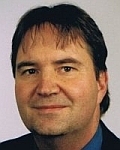 |
Jaap Bakker (Ministry of Infrastructure and the Environment, The Netherlands) |
|---|
Many decisions in design, construction and operation of infrastructure are made based on short-term analyses. Life Cycle Management (LCM), as a focus area within Asset Management, provides a different approach. LCM looks at performance, risks and cost from lifecycle perspective. It deals with all life cycle based decision making tools, procedures and processes.
The mini-symposium aims to increase “Life Cycle awareness�, to exchange technology and experiences and to stimulate others to contribute to the idea of Life Cycle Management.
Typical topics are: LCC, LCA, RCM, CBA, Information Management, Procurement strategy etc.
SS9: Building Information Models (BIM) for the lifecycle
 |
Jaap Bakker (Ministry of Infrastructure and the Environment, The Netherlands) |
|---|
The use of Building Information Models (BIM) in construction is increasing. Contractors and engineering companies use BIM-models to reduce failure cost and to increase efficiency. However, once a project is finished, the new asset becomes a part of the total asset stock. The information structure in the BIM may not be re-usable, because the model was not build from an Asset Management perspective. A new challenge arises: How to create one single BIM-model for the lifecycle? Using BIM-principles and 3D-representations in Asset Management opens new possibilities.
International developments on “BIM for the Lifecycle� is the theme if this special session.
SS10: Life-cycle maintenance strategies and performance evaluation for reinforced concrete structures located in the multi-hazardous environment
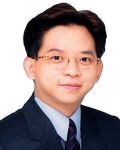 |
I-Tung Yang (National Taiwan University of Science and Technology, Taiwan) |
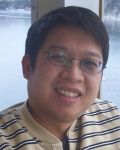 |
Chien-Kuo Chiu (National Taiwan University of Science and Technology, Taiwan) |
|---|
Most engineering systems used in maintenance strategies must consider deterioration and seismic structural damage (Multi-hazardous Environment). Compared to deterioration, which is generally a slow process caused mainly by environmental factors, seismic structural damage is defined by sudden declines in structural capacity. Additionally, for an RC structure in a region with high seismic hazard, cumulative damage by deterioration and earthquakes markedly affects maintenance strategies. For instance, after an earthquake, an RC structure may be damaged to varying degrees. If this damage is not repaired, the deteriorating structure may be damaged further during the next earthquake. Clearly, a structure is more likely to sustain heavy damage in the next earthquake when it was damaged by a previous earthquake. Therefore, a simulation procedure is needed that considers the cumulative damage effect induced by deterioration and earthquakes simultaneously when estimating structural performance. In this special session, several models or simulation methods will be introduced to tackle with these problems.
SS11: Chemical degradation of concrete structure
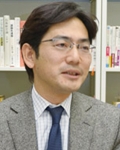 |
Tetsuya Ishida (The University of Tokyo, Japan) |
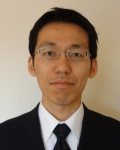 |
Kenichiro Nakarai (Hiroshima University, Japan) |
|---|
The deterioration of cementitious materials in concrete structures becomes worldwide concern. Ensuring the adequate durability of concrete structures in aggressive environments is a primary issue for engineers. The ingress of detrimental ions and consequent chemical reactions represent the greatest threat to the durability of cementitious materials. The long-term performance of the materials in aggressive aqueous environments needs to be evaluated by both experimental techniques and modelling approaches. This special session focuses on numerical models and experimental works with regard to chemical degradation phenomena of concrete structures.
SS12: Application base assessment of fiber reinforced cement composites - challenges to durability
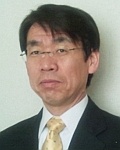 |
Yuichi Uchida (Gifu University, Japan) |
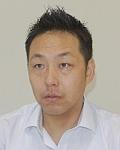 |
Minoru Kunieda (Gifu University, Japan) |
|---|
Novel fiber reinforced cement composites (FRCCs) such as Ductal and ECC have been developed, and there are some applications have been also designed. After several years after the construction, we should assess the performance of the applications comparing to the design concepts. This session focuses the contribution of FRCCs to the improvement of durability in terms of application basis.
The chairmen welcome the academic papers and technical reports on following topics;
- Examples of application concerning durability improvement
- Long-term performance of FRCCs
- New design concept of FRCCs for durable structures
- Life-span simulation of FRCCs and its modeling
- Acceleration and exposure tests
- Durability of fiber itself
etc.
SS13: Environmental performance of civil infrastructures via life cycle assessment
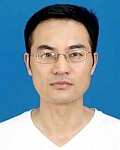 |
Lu Qing (University of South Florida, USA) |
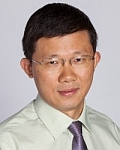 |
Qian Shunzhi (Nanyang Technological University, Singapore) |
|---|
While civil infrastructures, including pavements, bridges, buildings, etc. are vital assets to enhance living conditions, they also impose significant environmental impact onto the society due to enormous amount of raw materials, energy consumption and various emissions involved during their construction and maintenance. Life cycle assessment has been widely accepted as a scientific tool to quantify the environmental impact of chemicals, consumer products, service and also long-lasting civil infrastructures. The longevity of the civil infrastructures also raises many challenges and uncertainties in the modeling of life cycle environment performance. In this special session, we would like to invite international experts to contribute to this important topic.

